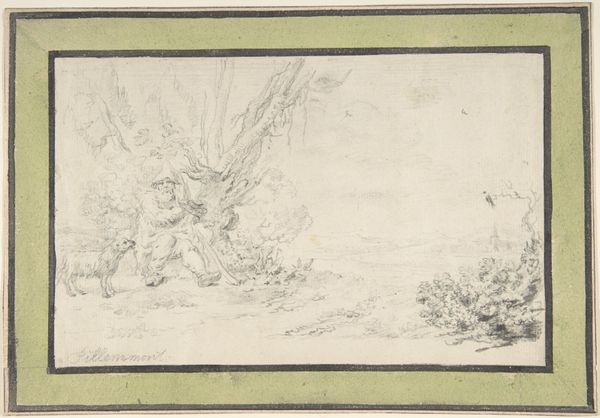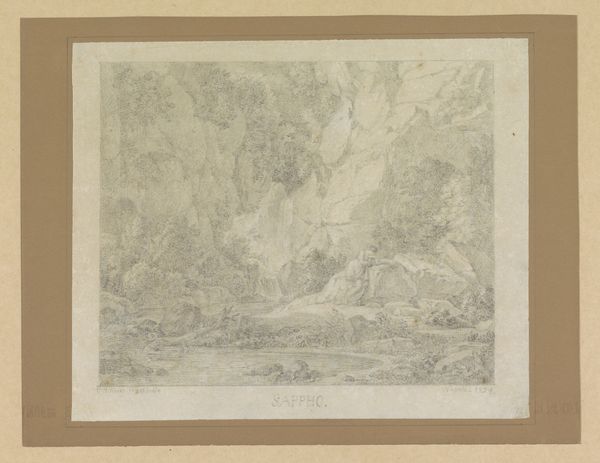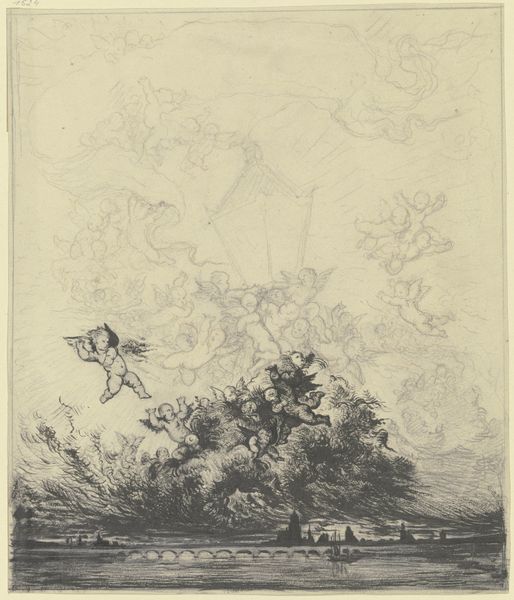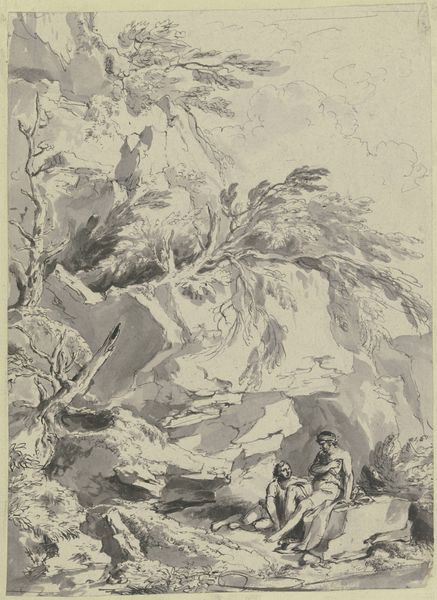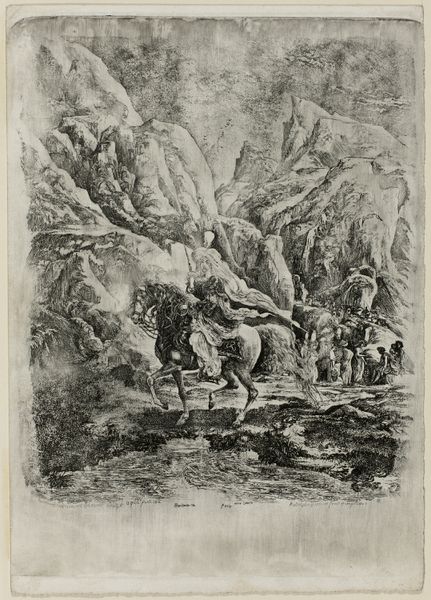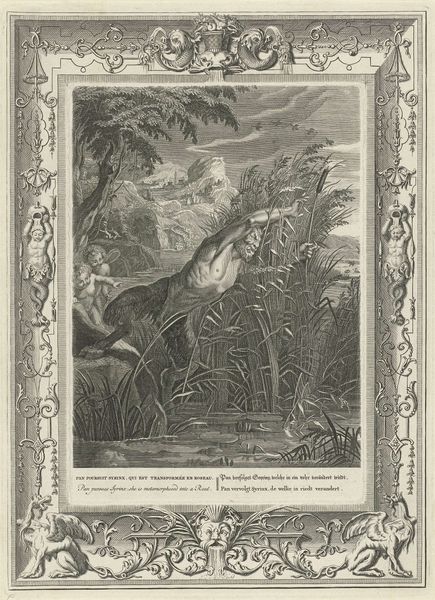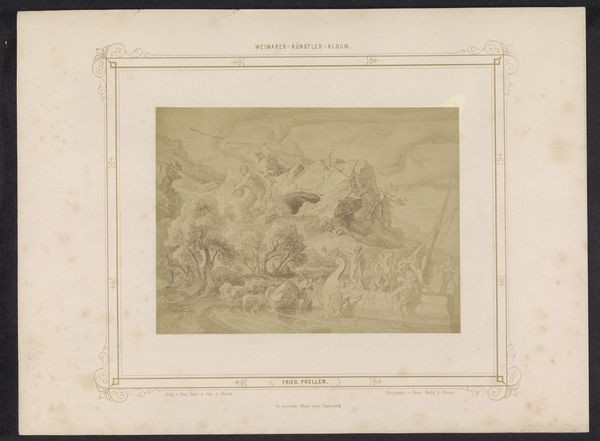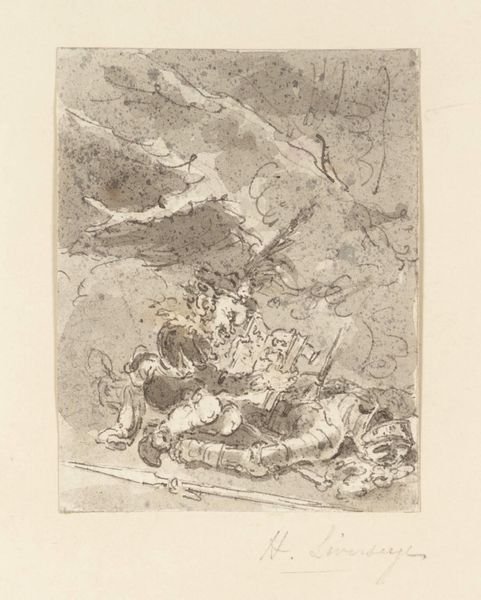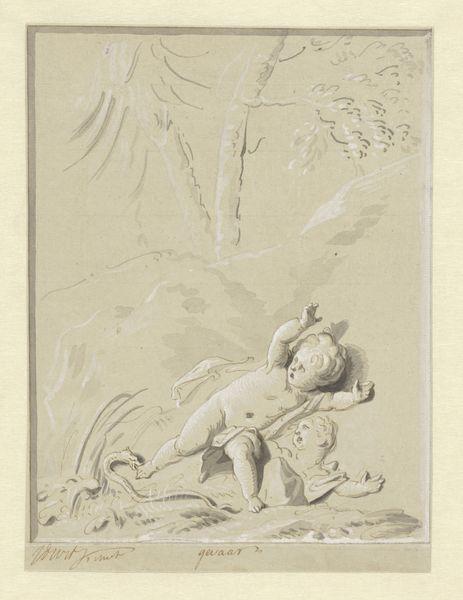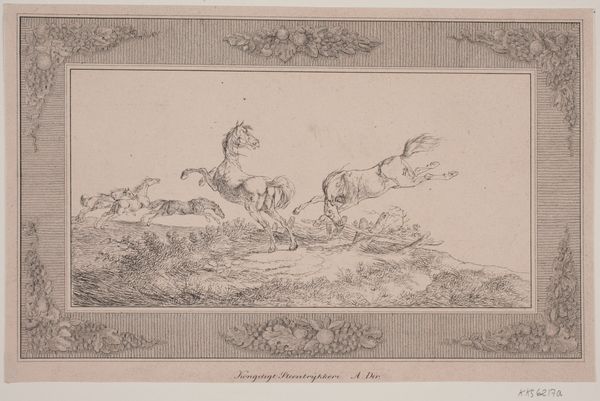
drawing, etching, paper
#
drawing
#
baroque
#
animal
#
etching
#
landscape
#
etching
#
figuration
#
paper
Copyright: Public Domain
Curator: This etching by Johann Elias Ridinger, created in 1744, depicts a wild boar, cornered and besieged by four dogs. It’s titled “Eber, von vier Hunden gestellt,” which translates to "Boar, cornered by four dogs". Editor: It's… chaotic. A maelstrom of fur and tusk and tooth etched in painstaking detail, all swirling around a central point of, what I assume, is mortal struggle. You can practically feel the bristling tension of the moment. Curator: Ridinger was celebrated for his detailed animal studies, particularly those showcasing the hunt. His works were often commissioned by aristocratic circles to promote ideals of dominion over the natural world. We can consider these pieces in the broader context of Baroque hunting traditions and imagery. Editor: Right, the power dynamics. I find myself drawn to the texture, though. Look at the variety of lines! Fine, almost wispy marks defining the dogs' coats contrasting with the bolder, deeper cuts outlining the boar’s bulk. I wonder what specific tools he used to create such nuanced effects in the printmaking process. And consider the labor involved to pull each individual impression... Curator: Indeed, printmaking allowed Ridinger to disseminate his images widely, shaping perceptions of animals and hunting across various social strata. These weren't just artistic exercises but influential visual documents that were circulated. How might different audiences, from wealthy landowners to ordinary citizens, have perceived such scenes? Editor: That dissemination raises a point, who owned dogs like these? Hunting dogs were specialized labor. We should research more of the cultural role the labor of training them had, and the craft involved with the making of all of those very sharp teeth we see here. And paper; how did this influence Ridinger's artistic practice? Was it handmade? Curator: Excellent point. The choice of materials inevitably influenced the reach of his art, and how they perceived the status the hunt had during this time. He was skillful in tailoring content for a public increasingly interested in accessing art. Editor: The subject itself becomes a kind of commodity here, circulated and consumed visually. Interesting. I never would have considered just how commodified the hunt could be with such easy reproduction. Curator: The political implications, of art mirroring aristocratic control over lands, is key. Well, this close look has really opened new avenues for me to examine Ridinger's wider impact. Editor: Absolutely. For me it’s been a fascinating look into the technical skill of printing, the different techniques Ridinger used, the physical labor embedded within even a "simple" print.
Comments
No comments
Be the first to comment and join the conversation on the ultimate creative platform.
